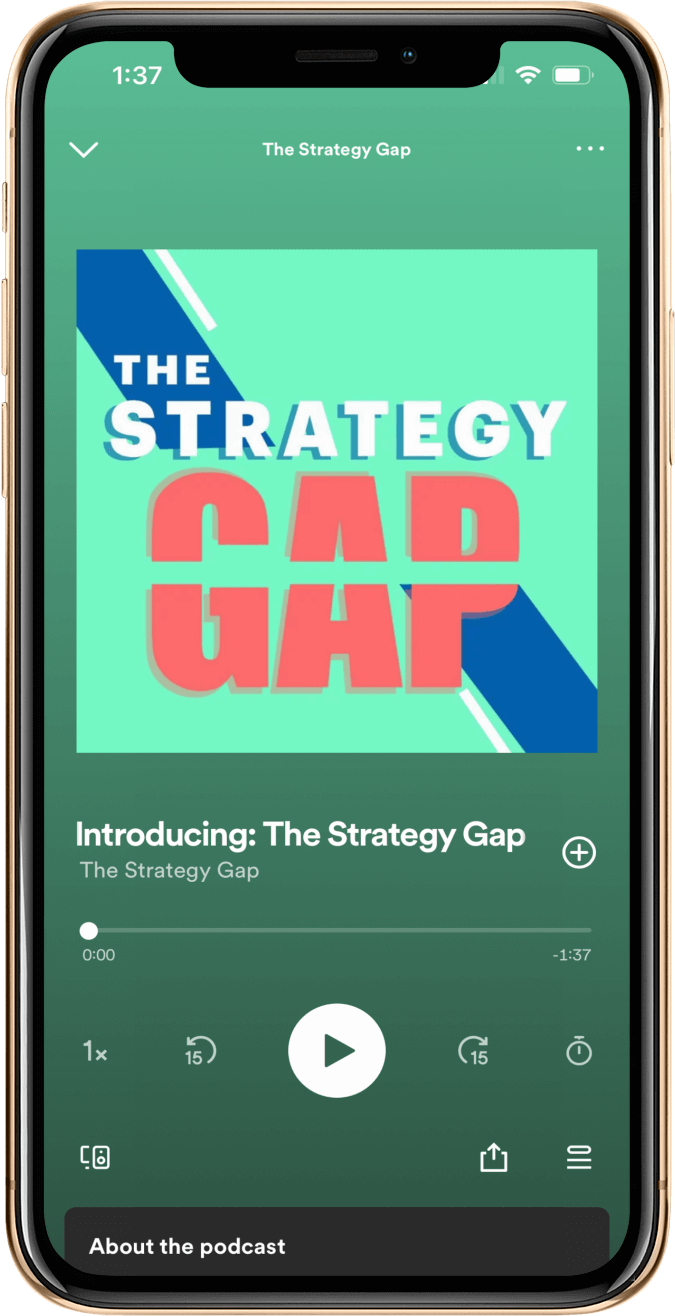If you think good talent is expensive, just wait until you see the price point for having bad talent on your team.
Adding the right people to your organization is one of the three key tenets for success. As a multi-stage investor, Mark Flickinger, General Partner and COO at BIP Ventures has seen his fair share of successes (and failures), and he offers a deep understanding of the simple factors that can cause your company to reach the stars or stay on the ground.
Mark explains the determining factors for success in your organization can be compared to a horse race. While there are only three factors of top concern, all three must work together seamlessly to ensure your company comes out on top. Those factors are the track (the market), the horse (the product), and the jockey (the team).
Engraining your strategic plan into day-to-day operations
It does not matter if the company is in the pre-revenue stage or pulling in 150 million annually, at each stage in a company’s growth journey, they encounter the same roadblock: developing a strong strategic plan and losing track of it the moment leaders step out of the meeting.
In the day-to-day duties of any company, everything is urgent and an emergency.
When team members feel as if they are constantly putting out fires, losing track of big-picture goals becomes extremely easy. The solution? Ensuring your strategic plan is engrained into your company so deeply that it is in front of the team every single day.
“That constant, engrained process of a touch point to keep things in front of them, so they do not lose touch with what we are doing is kind of the key to success,” Mark says. “When you look back on the year, and it is the first time you have dusted off your list that you settled on after hours of discussion, the chances are, you are probably not going to have done as much as you would like to be done.”
The need for top-down buy-in
Building a strategic plan that will be accomplished in the set timeframe begins with top leadership. Leaders must agree (with full conviction) to determine what is of the utmost importance, then they must build the accountability and discipline to carve out time to work towards those goals. As a company matures, the strategic plan should follow suit, becoming more nuanced and detailed.
Without the buy-in from the top, the company will not believe in the mission of the strategic plan — meaning they will continue to fight daily battles at a low scale instead of pushing towards those higher milestones.
The track: understanding your market
Gathering all of the available information on your market is crucial to define a strategy. There are many revolutionary companies that could have been major success stories but instead were forced to close their doors because they took a product to market when the market was not ready for it.
In less mature markets, companies can anticipate customers coming to them, as there may be very little competition and their products are likely to be cutting-edge for the sphere. Conversely, as the market becomes more mature, the company must go to the market.
Regardless of the maturity of the market, developing a deep understanding of the state of the market, where it has been, and where it is expected to go in the future should be the foundation upon which a strategic plan is formed.
The horse: a product offering a strong solution to a real product
Like all venture investors, Mark understands that every successful business has offered a real solution to a problem that is troublesome for those who are faced with it. Offering a product or service that does not decrease the strain caused by the problem will not lead to success. Additionally, offering a solution to a problem that has already been solved by another company will not lead to an influx of customers.
The jockey: building a success-driven team
“To get where you want to go, you have to have a great team,” Mark says.
Today’s labor marketing is tough, meaning top talent in every field likely already has a job at another company. New, exciting job offers that can lead to professional satisfaction are the driver to convince top talent to choose your company over the one they are working with currently — and that comes at a steep price.
Skipping the best-of-the-best to hire talent that may work well enough could save you twenty or thirty thousand dollars a year in payroll expenses, but the opportunity cost typically outweighs the break on payday tremendously.
Building a team of highly talented individuals who can fit into the company’s culture and values is often well worth the cost. “Hiring the best person for the job is going to be more expensive than you hope, but you know it will make you successful,” Mark says.
Interested in learning more? Mark discusses the ways to keep attention on the strategic plan during a normal business day, the factors that distinguish a strong product and a top-talent team member, as well as market trends to watch closely. Listen to our full conversation on Apple Podcasts, Spotify, or your favorite podcast player.
Listen to The Strategy Gap
A podcast about the space between savvy strategy and practical execution, including everything that can go wrong on the way.




